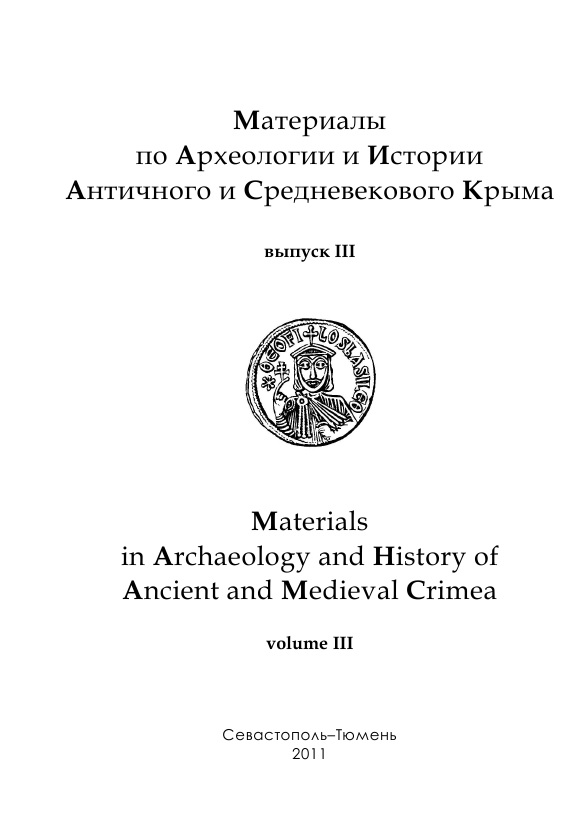Осколки Готской митрополии: финал христианских пещерных комплексов в Подонье
Shards of Gotha archdiocese: the final of Christian cave complexes in the Don region
Author(s): Yuri Yu. ShevchenkoSubject(s): Archaeology, Cultural history
Published by: Нижневартовский государственный университет
Keywords: Archaeology; history; Christian archaeology; Don region
Summary/Abstract: Gothic metropolis existed at the time of the First Ecumenical Council of the Church at Nicea 325 AD, when the Theophilus of Bosporus, Exarch of Gothia is mentioned together with the Cadmus the bishop of the Bosporus. This division of the Church for some time has lost the status of archdiocese, as receiver of Theophilus – Ulfilas only the office of a bishop of Gotha. However, Metropolis is preserved for 787–791 years. As seen on notitsii of the seven dioceses of its composition at this time. Conservation of this large church education could not contribute to an active Christian preaching in the northern Black Sea coast among Savirien and their allies Antes (Kardosta and Makarios) in postgunnskoe time, as well as the adoption of Christianity Bulgarian (Savirs) Prince Alp-Ilitver in 682 was one of the dioceses of the Gotha Metropolis – Onogurs geographically consistent with the Great Bulgaria, stretching from the Don to the Dnepr (judging by the findings in the Dnieper left bank of the Great Khan's funeral Bulgaria Kubrat). Among the cave-Christian churches Don region has thrones that are adjacent to the apse, not intended for service around the throne after the order of the Liturgy of St. Basil bet before making Trullan Cathedral Church (692). Planimetry cave temples of the region (Cholki) and archaeological materials (Divnogorie have Mayatsky settlement) indicates the continuation of their practice of prayer during the reign of the Khazar khanate (VIII–X centuries). And later - at the time of the Old Russian state. Version of "desolation" of land south-east Russia in the XIV–XV centuries. (A.A. Shakhmatov) contrary to the operation at this time of cave complexes Divnogorie (V.V. Stepkin) and Svjatogorsk cave monastery that arose at this time. It was found slate inset Panagia depicting St. Nicholas of Myra, surrounded by seven young men, sleeping in a cave at Ephesus. It dates from no earlier than XII and XIV centuries in later. Strap on the front side of a silver folding of Panagia Svya-togorye with the face of Christ, Bishop and titla Hebrew belongs to a series of early bivalve panagias XIV–XV centuries. Along with the glass vessels of Cvyatogorye and glazed pots, paten, having numerous Crimean analogy, these findings indicate that the basis and operation of cave monastrery in the era of the Mongol-Tatar yoke.
Journal: Материалы по археологии и истории античного и средневекового Причерноморья
- Issue Year: 2011
- Issue No: 3
- Page Range: 244-274
- Page Count: 31
- Language: Russian

